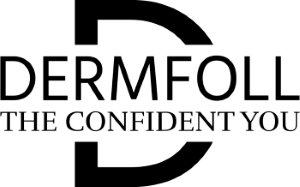Key to Effective Fibroblasts Skin Tightening
looking for a way to tighten and refresh your skin without going under the knife? Have you considered that radio frequency tools could be just what you need?
These non-invasive tools are making waves in skincare, delivering powerful results that help restore a firm appearance.
As we get older, our skin tends to lose its elasticity. This is mainly because the levels of collagen and elastin start to drop. If you’re seeing some sagging or fine lines that weren’t there before, don’t worry—you’re definitely not alone.
These are just normal signs of getting older. Radio frequency devices focus on fibroblasts. These are cells that enable the production of collagen.
Welcome to DERMFOLL. Lets take a closer look at how radio frequency-based devices work and the benefits they offer. Particularly in boosting fibroblast activity for effective skin tightening.
Let’s kick things off by diving into how RF technology operates at a cellular level. Especially in terms of stimulating fibroblasts to achieve smoother, firmer skin.
Next, we’ll look at how radio frequency tools stacks up against other skin-tightening methods, such as lasers and ultrasound.
Finally, let’s look at the various types of RF devices, ranging from monopolar to multipolar. So you can figure out how each one might fit in for your skincare needs.
What Are Radio Frequency Tools?
Radiofrequency (RF) technology and Radio Frequency Based Devices are non-invasive tools that uses electric currents to generate focused heat in the skin’s deeper layers. This heat is absorbed by water molecules and proteins in the skin. They largely reach the dermis (the layer responsible for skin strength and flexibility).
While at the outer layer, the epidermis remains undisturbed. This regulated heating procedure has been demonstrated to induce collagen contraction. With increased fibroblast activity and, over time, new collagen and elastin production, a combination required for skin firmness and elasticity.
Where Did Radio Frequency Based Devices Originate From?
While RF emerged in medical therapies, particularly diathermy, which generates heat in tissues to treat pains. Its applications have expanded dramatically.
By the early 2000s, it had become a popular choice for non-surgical skin tightening. With wrinkle removal and even body sculpting.
Given these advancements, RF is now used in a variety of industries, including dermatology and plastic surgery. Building upon the understanding of RF’s evolution, let’s explore the different types of devices and their specific benefits.
The Many Faces of Radio Frequency Tools: Types and Their Specialties
Monopolar Radio Frequency Based Devices: The Deep Workers.
Monopolar radio frequency based devices have a single active electrode and a grounding pad placed on the body.
This setup allows RF radiation to get deeper into the skin’s structure. This depth makes monopolar RF ideal for treating areas with higher skin laxity. Especially at areas around the abdomen or thighs.
Research suggests that this method can significantly boost collagen restructuring. Resulting in a more defined and toned appearance for the treated area.
In a study focusing on abdominal skin, patients who received monopolar RF treatments saw improved collagen density. Especially in deeper layers, which correlated with a visible firming effect after treatment.
Bipolar Radio Frequency Based Devices: Surface-Level Precision
Bipolar radio frequency tools use two electrodes arranged close together. Allowing energy to pass between them at a restricted depth (often 2-4 mm). which is shallower when compared to Monopolar.
This makes them appropriate for more superficial treatments. They effectively target fine wrinkles or minor laxity in sensitive areas such as the face.
Unlike monopolar devices, bipolar RF is softer on deeper tissues, permitting more frequent use without the risk of overheating.
A study of patients with arm laxity discovered that bipolar RF paired with liposuction boosted collagen density.
It activates heat shock proteins such as HSP47, which promote collagen formation. This is ideal for mild to moderate skin laxity. providing a natural-looking lift and stiffness with minimal downtime.
Multipolar Radio Frequency Based Devices: Balanced and Targeted Treatment
Multipolar radio frequency tool, particularly those with quadripolar designs, spread RF energy across many electrodes. This setup allows for a milder, but equally powerful, heating technique.
This stimulates collagen and elastin formation in both the superficial and deeper skin layers. Quadripolar RF has demonstrated efficacy in facial tightening, particularly in reducing fine wrinkles.
In a human study using quadripolar RF, consecutive administrations resulted in collagen fiber thickening and restructuring. Leading to wrinkle reduction and skin firmness improvements.
How Do Other Technologies Stack Up Against Radio Frequency Based Devices
Depth and Flexibility:
While devices such as high-intensity focused ultrasound (HIFU) can deliver highly concentrated energy at specified depths,
RF’s depth can be modified based on device type (monopolar, bipolar, or multipolar), making it adaptable to various treatment requirements.
Heat Control Across Skin Tone:
Unlike lasers that rely on light absorption by chromophores, RF uses electrical currents, making it suitable for all skin types without the risk of pigmentation changes.
It performs consistently across all skin tones. This lowers the risk of hyperpigmentation. Making RF a safer option for a broader population.
Collagen and Elastin Stimulation:
Because RF can stimulate both collagen and elastin with minimal surface damage.
Its results in smoother, firmer skin with less downtime—an important benefit for progressive, natural results without long recovery times.
Localized Tissue Response:
RF not only tightens but also encourages the formation of new blood vessels (neoangiogenesis). Improved vascularity improves skin nutrition and texture in treated regions.
How Does Fibroblasts Skin Tightening Occur On RF Treatment
The Function of Fibroblasts in Skin Firmness
Fibroblasts, the skin’s structural architects.
Fibroblasts are the major cells in our skin’s extracellular matrix (ECM), i.e., the playground of your dermis. They are responsible for creating collagen, elastin, and glycosaminoglycans. These elements work together to provide skin with firmness, elasticity, and moisture retention.
Collagen fibers, particularly types I and III, serve as a scaffold, keeping the skin’s structure together. Whereas elastin fibers allow it to stretch and rebound.
Tragically, as we age, fibroblast activity declines, resulting in lower collagen and elastin production. Which adds to skin laxity, fine lines, and wrinkles.
How Does RF Boost Fibroblasts Skin Tightening Activity
RF technology enhances fibrocyte activity for skin tightening via thermal stimulation and collagen contraction.
Radiofrequency (RF) devices generate precise thermal energy in the dermis. Producing heat within the ideal temperature range of 40°C to 45°C.
The heat breaks hydrogen bonds in existing collagen fibers, causing them to shrink. Delivering firmness to the skin.
The heat action also initiates a healing response, encouraging fibroblasts to create new collagen and elastin—a safe and effective remodeling process. This spares the epidermis (outer visible layer) and requires little recovery time.
How Do Radio Frequency Tools Create New Collagen?
RF technology stimulates a series of biological responses that generate new collagen (neocollagenesis) and elastin (neoelastogenesis). Here’s a closer look at the chain of events caused by RF treatment:
Heat Shock Protein (HSP) Activation
Heat from radiofrequency therapy stimulates the expression of heat shock proteins. Particularly HSP47 and HSP70. These proteins are critical for collagen formation and cellular defense.
HSP47 stabilizes freshly produced collagen in fibroblasts, whereas HSP70 protects collagen fibers from degradation. Working together to strengthen and densify the skin’s collagen matrix.
Fibroblast Growth Factors and Elevated Blood Flow
RF-induced heat also increases fibroblast growth factor 2 (FGF-2), promoting fibroblast proliferation with collagen synthesis.
In addition, FGF-2 promotes angiogenesis, or the production of new blood vessels. Which improves skin health by increasing nutrition flow and encouraging new tissue formation.
Research indicates that higher levels of FGF-2 promote collagen fiber rearrangement and thickening. Resulting in firmer and more robust skin.
Creating Controlled inflammation
The gentle inflammatory response induced by RF also promotes cyclooxygenase-2 (COX-2) synthesis. COX-2 promotes cell proliferation and activates fibroblasts.
Controlled inflammation promotes ECM turnover, leading to long-term benefits in skin firmness and suppleness.
Macrophage’s Role in Collagen Restructuring
As collagen strands are rearranged, macrophages play a key cleanup job. These immune cells eliminate any partially damaged collagen, allowing new collagen fibers to correctly integrate.
This process creates a better-ordered collagen network in the dermis, leading to improved skin firmness and texture over time.
These mechanisms—collagen contraction, fibroblast stimulation, and vascular improvement—work together to gradually improve skin firmness, elasticity, and overall quality.
CONCLUSION
We have taken a closer look at how radio frequency tools work to tighten and firm your skin.
You’ve now seen RF’s unique talent: it energizes fibroblasts to spark collagen and elastin production, bringing a youthful bounce back to the skin.
We walked through the different types of RF – monopolar, bipolar, and multipolar – each with its own strengths.
How RF technology compares with lasers and ultrasound. RF stands out because it uses focused heat that works well for all skin types, making it a gentle, non-invasive way to achieve smoother, firmer skin.
Curious to learn more? RF isn’t just for tightening – find out how it can help during motherhood!
Ever thought of RF as a solution for more than skin firmness? Head over to our next post to see how it can tackle issues like Post pregnancy concerns.








